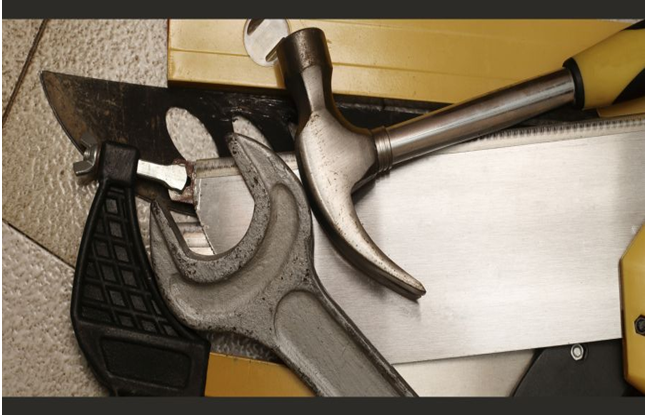Hand tools are vital items in every tradesman’s or DIYer’s toolbox. From screwdrivers and hammers to wrenches and pliers, these versatile tools are essential for tackling a wide range of everyday projects and complex repairs. But have you ever wondered what are the processes of a Best Hand tool manufacturer.
In this blog post, we’ll take an overview into the world of manufacturing hand tools. We’ll explore how are these hand tools manufactured, and what goes into their production. Whether you’re a DIY enthusiast, a professional trades person, or simply curious, this post will provide a deeper understanding of the fascinating world of tool manufacturing.
Contents
- The Initial Design Stage
- Forming and Cutting
- The Hardening, Tempering, and Bonding Process
- The Finishing Touches: Polishing and Coating
- Quality Control
- Conclusion
The Initial Design Stage
The manufacturing process of hand tools can vary depending on the specific tool, but most involve several stages that ensure precision and quality.
Firstly, the tool is meticulously designed using advanced CAD software. This step allows for the creation of a detailed plan that serves as a blueprint for the manufacturing process. Every aspect of the tool’s design is carefully considered, from its shape to its functionality.
Materials used in hand tool manufacturing are also critical to their overall quality. Most hand tools are made from high-carbon steel, which is strong and durable, but can often be prone to rust. Stainless steel is also commonly used for hand tools as it is rust-resistant. Other materials used include aluminium, bronze, and plastic, which are used to make tool handles.
Forming and Cutting
Once the design is finalized, the next stage involves the use of a state-of-the-art CNC machine. This machine precisely cuts the tool’s shape out of a solid block of steel or metal. The use of CNC technology guarantees unparalleled accuracy, ensuring that each tool is crafted with precision and consistency.
Another of these techniques is forging, which involves hammering or pressing a piece of metal to shape it into a specific form. This process is used to create tools such as hammers, wrenches, and pliers. Another technique is casting, where molten metal is poured into a specific mold to create the tool’s shape. This method is used to produce tools like screwdrivers and sockets.
The Hardening, Tempering, and Bonding Process
After the cutting process, the tool undergoes the crucial steps of hardening and tempering. In this phase, the metal of the tool is subjected to extreme temperatures, pushing it to its limits. It is then rapidly cooled, a process known as quenching, that imparts exceptional strength and durability to the tool, enhancing its performance and longevity.
Once this meticulous process is completed, the tool is skillfully bonded with a handle, ensuring a secure and reliable grip. Depending on the chosen material for the handle, various techniques, such as the use of high-quality adhesives, specialized glues, or precise welding methods, are employed to create a seamless and robust connection. This attention to detail in the bonding process further enhances the overall quality and functionality of the tool, making it a reliable companion for any task at hand.
The Finishing Touches: Polishing and Coating
Next, the tool goes through a meticulous series of finishing processes to ensure its impeccable quality. First, it undergoes a precise polishing procedure, where every surface is carefully smoothed and refined to perfection. Highly skilled artisans meticulously inspect and work on each intricate detail, ensuring that no imperfection goes unnoticed.
Once the polishing is complete, a protective coating or a vibrant paint is expertly applied. This not only enhances its visual appeal but also serves as a safeguard against potential rust and corrosion. The coating is carefully selected to provide maximum durability, ensuring the tool’s longevity and reliable performance.
The finishing touches are what truly set this tool apart. Each step in the finishing process is carried out with utmost precision and attention to detail. The result is a tool that not only performs flawlessly but also exudes a sense of craftsmanship and quality that is unparalleled.
Quality Control
Once the finishing touches are complete, our team of experts meticulously conducts rigorous quality control measures. Each aspect of the tool’s performance is thoroughly evaluated to ensure it surpasses the highest standards set by the manufacturer.
From precision testing to comprehensive analysis, every step is taken to guarantee that the final product not only meets but exceeds expectations. This meticulous attention to detail and unwavering commitment to excellence is what makes our final product nothing short of exceptional.
Conclusion
The manufacturing process of hand tools is intricate and involves many different stages and techniques. The process ensures that each tool is precise, accurate and made to the highest standards. Understanding the manufacturing process of hand tools gives a greater appreciation of the level of skill and craftsmanship required to create the tools we use in our everyday lives.
From design to quality control, each stage of manufacturing is vital in producing high-quality hand tools built to last. Ensuring that retailers, professionals, global buyers, wholesalers, and manufacturers understand this process can help them choose the best quality tool for their needs.



